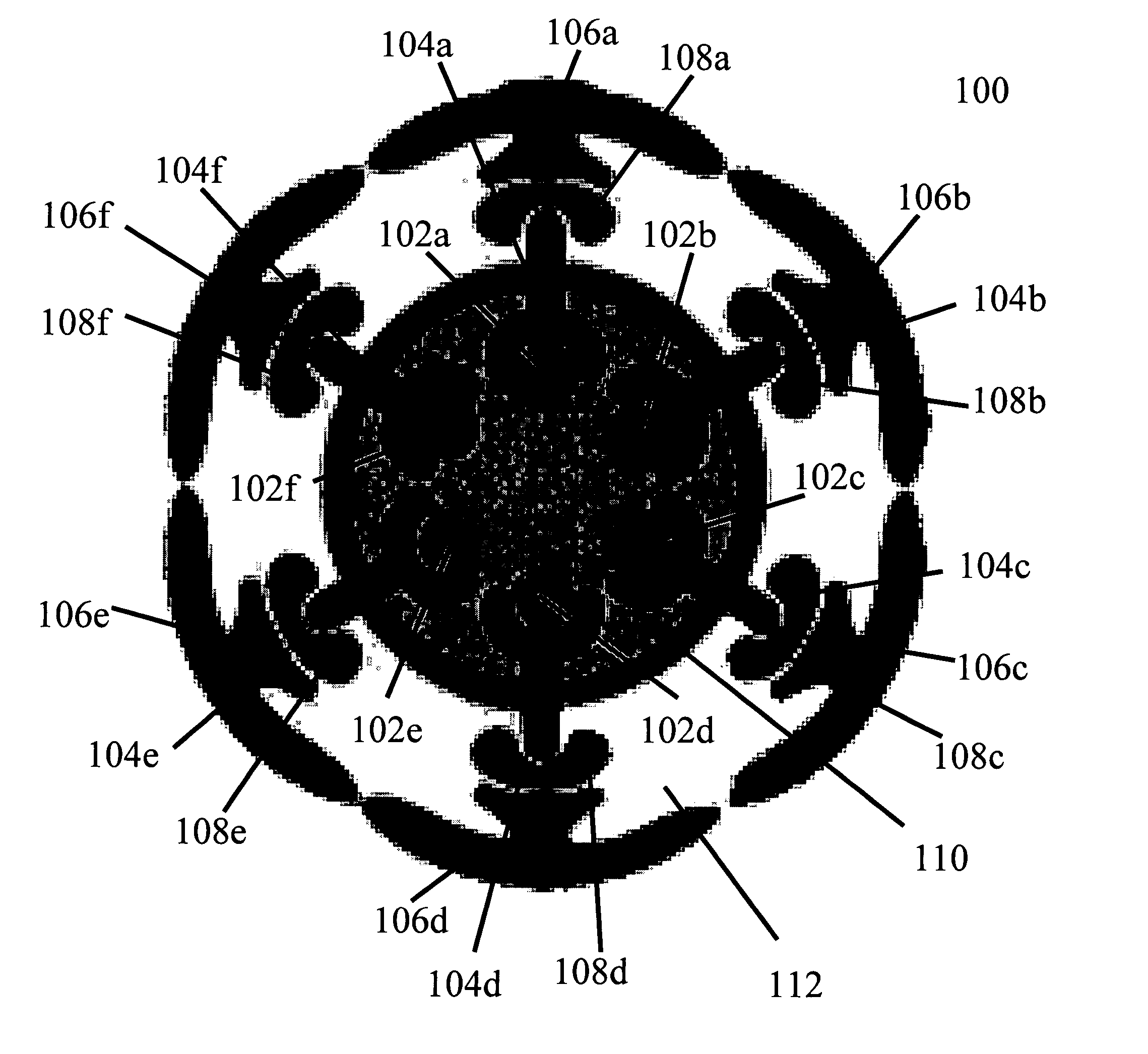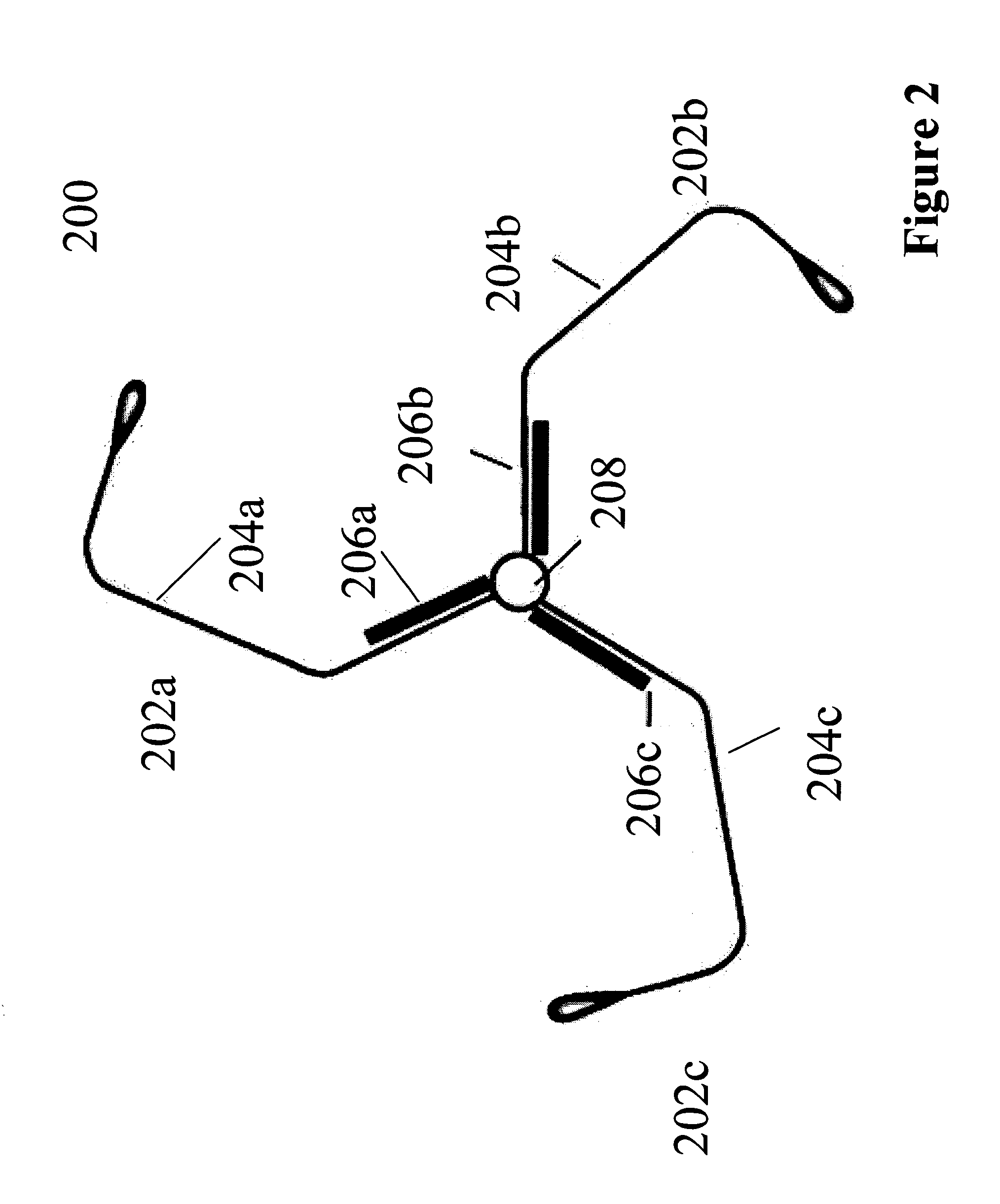Quantum information processing elements and quantum information processing platforms using such elements
a technology of information processing elements and quantum information processing platforms, applied in the field of quantum computers, can solve the problems of destroying the ability of the qubit to perform computations, physical limit presents a barrier to the speed with which computations may be carried out by a classical computer, and difficult maintenance of the state of the qubit, so as to achieve the effect of facilitating the movement of cargo elements and a wide variety of cargo elements
- Summary
- Abstract
- Description
- Claims
- Application Information
AI Technical Summary
Benefits of technology
Problems solved by technology
Method used
Image
Examples
Embodiment Construction
[0054]FIG. 1 is a conceptual cross-sectional view of a quantum information processing (QIP) element 100, according to an illustrative embodiment of the invention. The QIP element 100 includes one or more cargo elements 102a–102f, a plurality of receptor molecules 104a–104f, a plurality of protein molecules 106a–106f formed into a cage 106, and a plurality of adapter molecules 108a–108f. The protein molecules 106a–106f self-assemble in vitro to form the cage 106 that defines a cavity 112.
[0055]As shown, the receptor molecules 104a–104f each bond with a respective cargo element 102a–102f and the adapter molecules 108a–108f bond the receptor molecules 104a–104f to the protein molecules 106a–106f, respectively. The bonding may be either covalent or non-covalent—the latter type including ionic interactions, hydrophobic interactions, or hydrogen bonds—depending on the application, system design, receptor design, cargo type and / or the interaction / application environment. Some G protein-cou...
PUM
| Property | Measurement | Unit |
|---|---|---|
| diameter | aaaaa | aaaaa |
| diameter | aaaaa | aaaaa |
| sizes | aaaaa | aaaaa |
Abstract
Description
Claims
Application Information
 Login to View More
Login to View More - R&D
- Intellectual Property
- Life Sciences
- Materials
- Tech Scout
- Unparalleled Data Quality
- Higher Quality Content
- 60% Fewer Hallucinations
Browse by: Latest US Patents, China's latest patents, Technical Efficacy Thesaurus, Application Domain, Technology Topic, Popular Technical Reports.
© 2025 PatSnap. All rights reserved.Legal|Privacy policy|Modern Slavery Act Transparency Statement|Sitemap|About US| Contact US: help@patsnap.com



